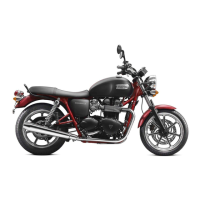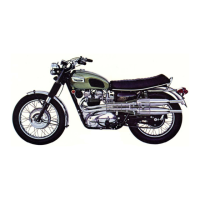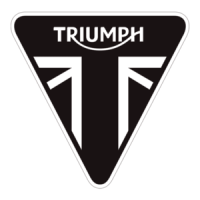96
Maintenance and Adjustment
of battery discharge. Disconnecting the
battery from the motorcycle during storage
will reduce the rate of discharge.
Battery Discharge During Storage
and Infrequent Use of the
Motorcycle
During storage or infrequent use of the
motorcycle, inspect the battery Voltage
weekly using a digital multimeter. Follow the
manufacturer’s instructions supplied with the
meter. Should the battery Voltage fall below
12.7 Volts, the battery should be charged (see
page 96).
Allowing a battery to discharge or leaving it
discharged for even a short period of time
causes sulphation of the lead plates.
Sulphation is a normal part of the chemical
reaction inside the battery, however over time
the sulphate can crystallise on the plates
making recovery difficult or impossible. This
permanent damage is not covered by the
motorcycle warranty, as it is not due to a
manufacturing defect.
Keeping the battery fully charged reduces the
likelihood of it freezing in cold conditions.
Allowing a battery to freeze will cause serious
internal damage to the battery.
Battery Charging
For help in selecting a battery charger,
checking the battery Voltage or battery
charging, contact your local authorized
Triumph dealer.
The battery gives off explosive gases; keep
sparks, flames and cigarettes away. Provide
adequate ventilation when charging or
using the battery in an enclosed space.
The battery contains sulphuric acid (battery
acid). Contact with skin or eyes may cause
severe burns. Wear protective clothing and
a face shield.
If battery acid gets on your skin, flush with
water immediately.
If battery acid gets in your eyes, flush with
water for at least 15 minutes and SEEK
MEDICAL ATTENTION IMMEDIATELY.
If battery acid is swallowed, drink large
quantities of water and SEEK MEDICAL
ATTENTION IMMEDIATELY.
KEEP BATTERY ACID OUT OF THE
REACH OF CHILDREN.

